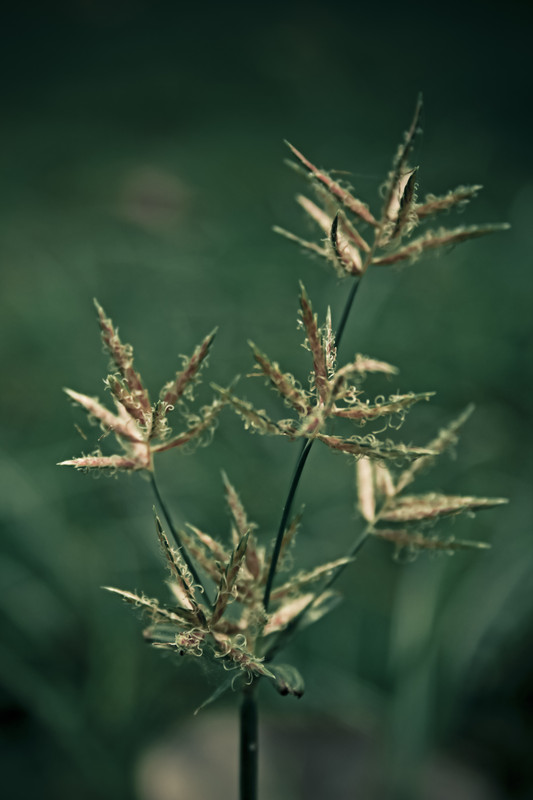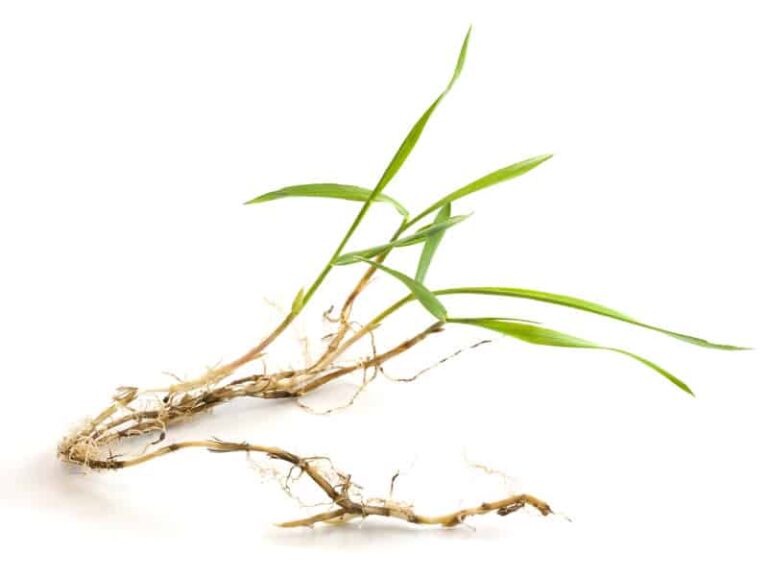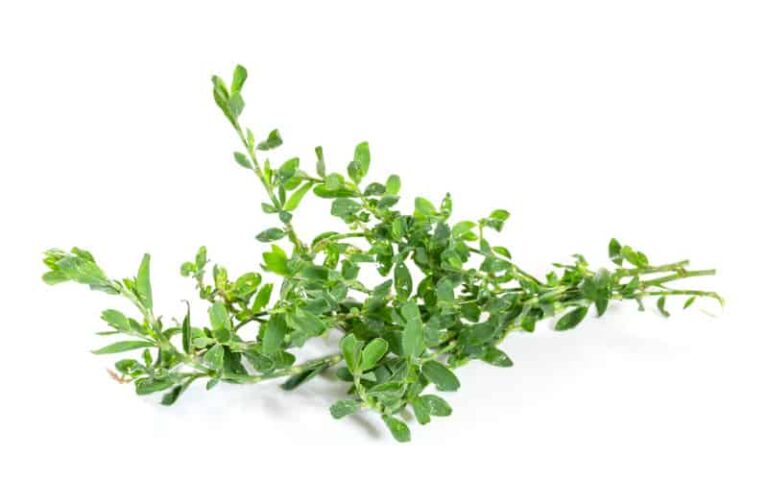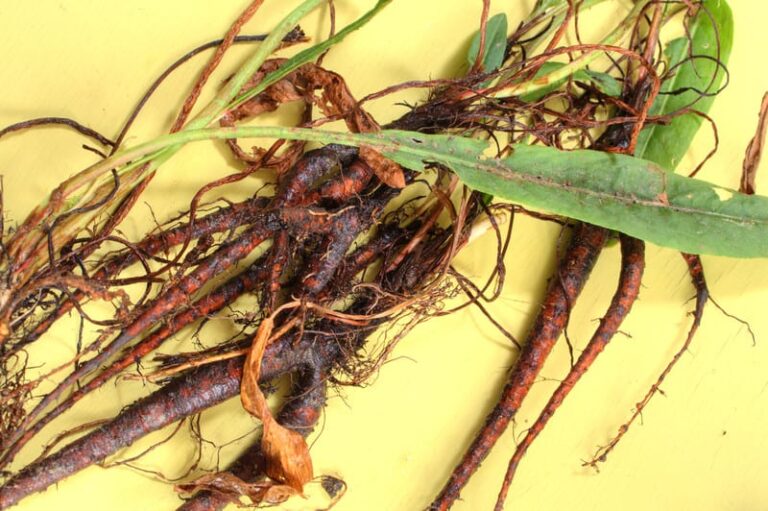Nutsedge Organic Weed Control
Nutsedge is a perennial plant that resembles grass. It reproduces by seed and almond-shaped tubers at the end of running roots.
Botanical name: Cyperus esculentus (yellow nutsedge); Cyperus rotundus (purple nutsedge)
Organic Weed Control at Amazon
- Monterey Vegetable Pre-Emergent Weed Control
- Homietina Heavy Duty Weed Barrier Fabric 4×300-feet
- Preen Natural Vegetable Garden Weed Preventer
- Green Gobbler 20% Vinegar Weed and Grass Killer
- WeedGuard Plus Biodegradable Paper Weed Barrier

Nutsedge description and life cycle
- Solid stems that are triangular in cross-section (true grasses are hollow and round).
- Grows 6 to 30 inches tall depending on variety.
- Leaves grow from the base in groups of three.
- Leaf-like bracts radiate out below the flower cluster of spreading spikes.
- Flowering stems can reach 30 inches tall.
- Yellow nutsedge has light brown flowers and seeds; purple nutsedge flowers have a reddish tinge and the seeds are dark brown or black.
- Reproduces by seed and underground rhizomes and globe-shaped tubers at the end of each rhizome.
- Tubers (sometimes called ‘nutlets’) of yellow nutsedge are edible, sometimes called earth almonds.
- Reproduces by rhizomes, tubers, and windborne seeds.
- Thrives in waterlogged soil but tolerates drought.
Nutsedge root system
Nutsedge has a horizontal underground rhizome root system that can spread 10 feet in all directions from the crown of the plant. Rhizomes are underground stems. Nutsedge rhizomes grow as deep as 8 to 14 inches below the soil surface. Tubers are produced at the end of each rhizome; a tuber can sprout and grow a new plant.
Nutsedge organic control
- Remove nutsedge when young—less than 6 inches tall–before rhizomes spread.
- Mature plants are more difficult to remove; rhizomes and tubers left in the ground can reproduce new plants. New plants can easily sprout 10 feet in all directions from the parent plant.
- Dig down 14 inches to remove all roots.
- Once plants and roots are removed cover the area with thick landscape fabric or cardboard topped with bark for at least one growing season.
- Cultivate the soil to expose rhizomes and tubers and let them dry out and die. Root parts left behind can sprout new plants.
- Do not let nutsedge flower; cut the plant down before its flowers and seeds become windborne.
Four quick ways to control weeds
- Weed early. Control weeds in the first month after they germinate.
- Weed often. Hand weed every two weeks through the season.
- Weed by hand when the soil is wet (best to get roots).
- Use a hoe if the soil is dry. Decapitate weeds before they flower and drop seed.
Related articles:
Vegetable Garden Organic Weed Control
Vegetable Garden Organic Pest Control
Vegetable Garden Diseases Problem Solver
Garden Planning Books at Amazon:
- Vegetable Garden Almanac & Planner
- Kitchen Garden Grower’s Guide Vegetable Encyclopedia
- Vegetable Garden Grower’s Guide
- Tomato Grower’s Answer Book







